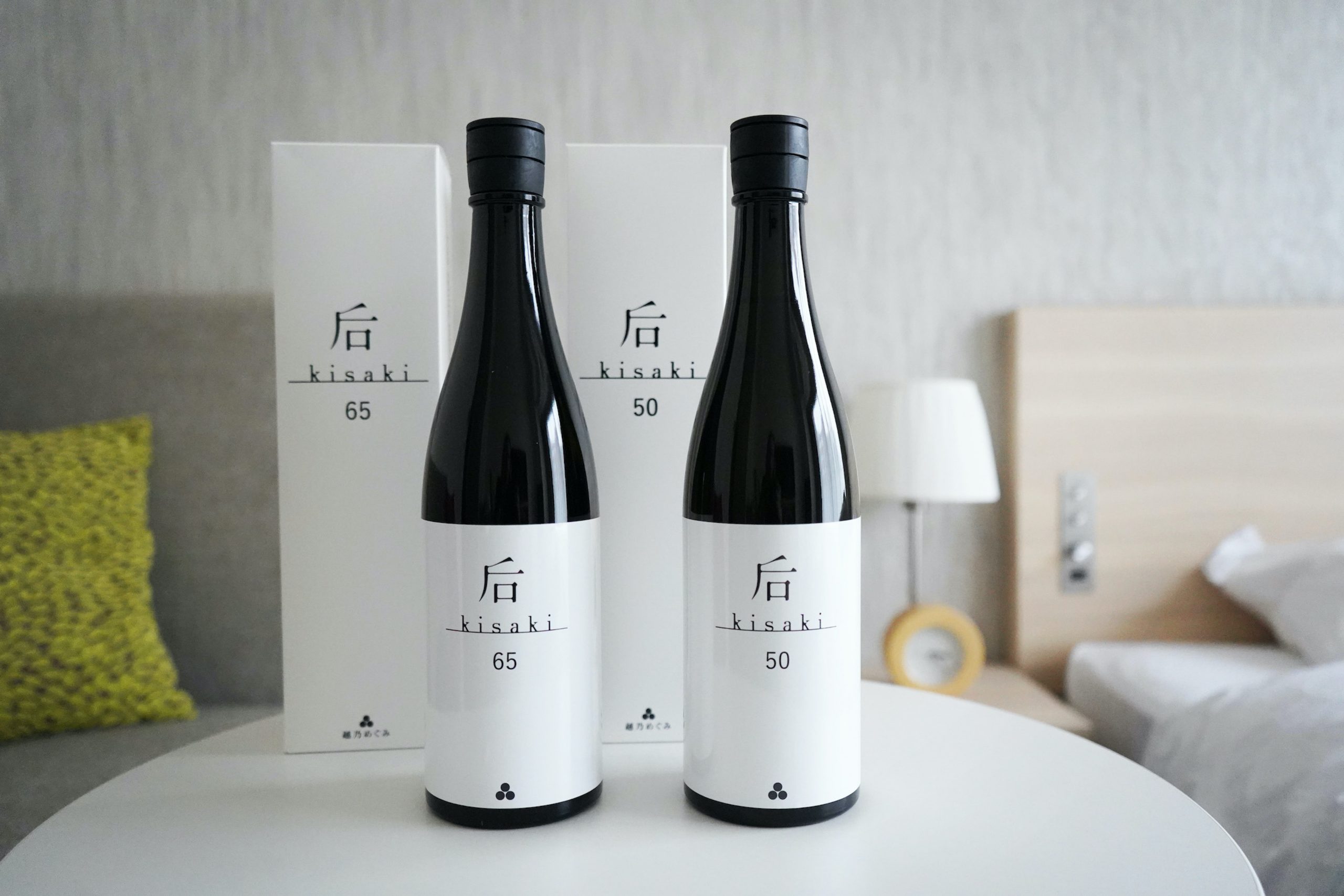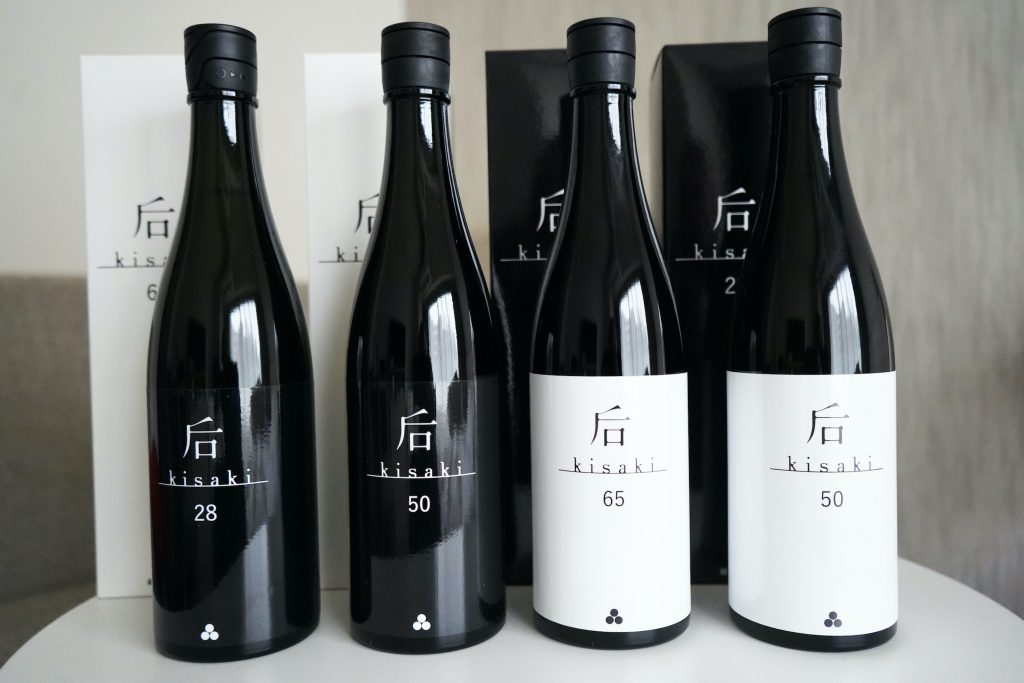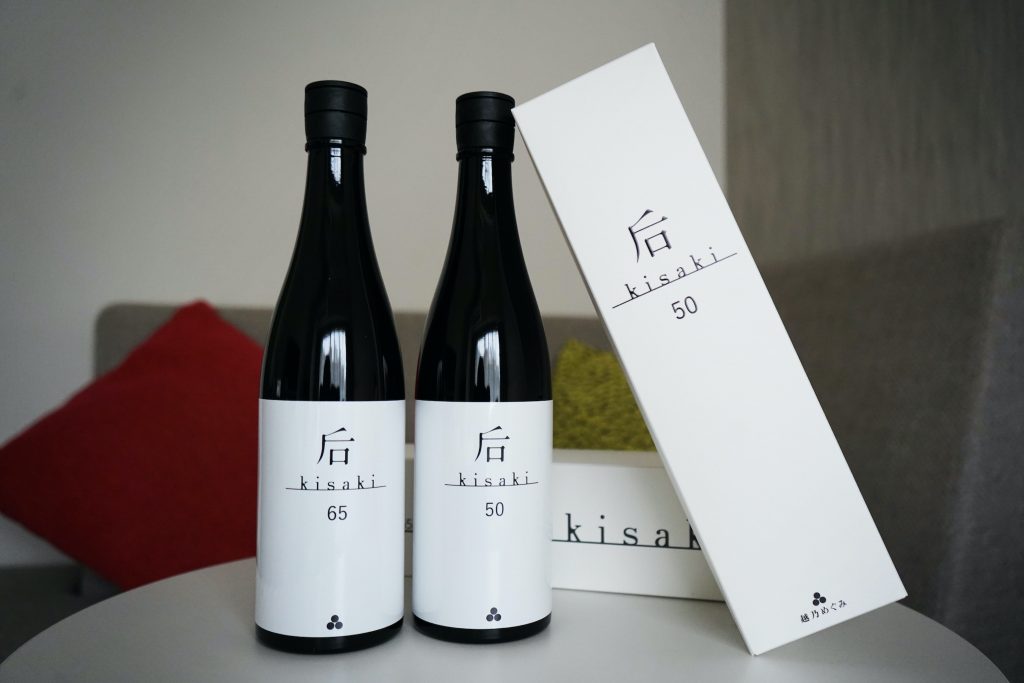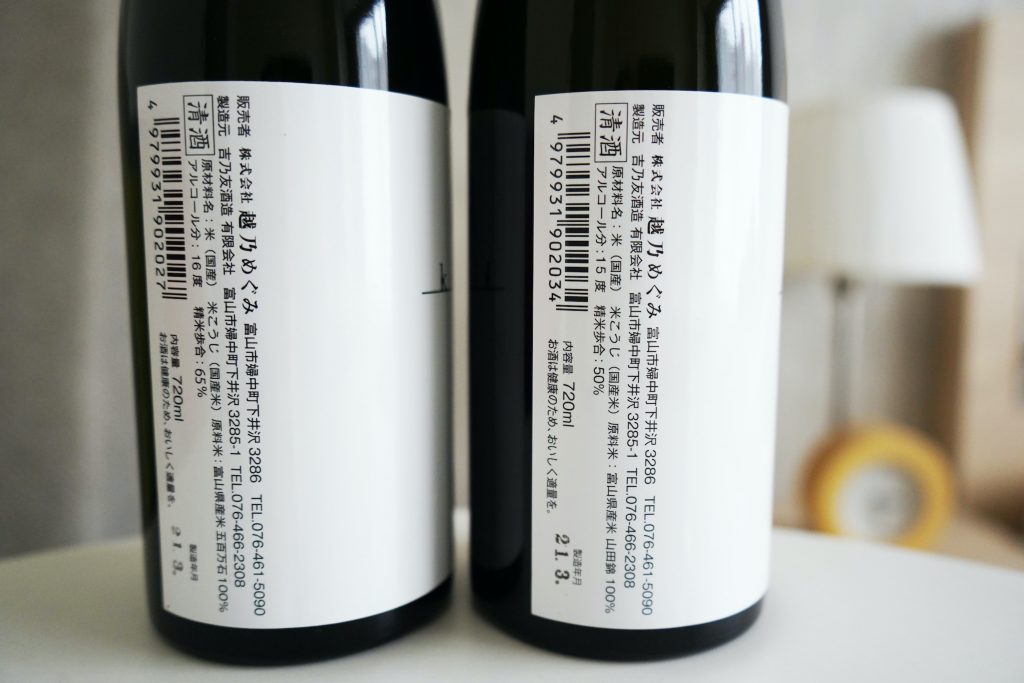
Sake Review: Kisaki White 50 & Kisaki White 65
Yoshinotomo Sake Brewery established in 1877 is the brewery behind the Kisaki label. Well known for their Junmai sake this award-winning brewery is located in Toyama, a region famous for its many sake breweries.
Yoshinotomo Shuzo – Behind the Sake
Taking on the challenge of “domain" or “terroir" as we know it from the wine industry, Yoshinotomo Shuzo has recently decided to rethink sake. And so, in addition to their more traditional sake, they have set out on a new path creating sake aimed at a global audience – “Kisaki" the queen of sake was born.
And this was certainly no minor task, as in order to do so, Yoshinotomo Brewery had to turn their production around 5 years ago. Making it their mission to cultivate everything inside the region. From growing their own rice, polishing in-house, and then of course brewing the sake!
With their mission to create outstanding Junmai sake, they have done just that. Incredibly successful, if I may add, as their flagship sake the Black Kisaki 28 recently won the prestigious “NAMAZAKE AWARDS 2018" in London.

The Sake – Kisaki White
Within the Kisaki range, we find a few different products, and the white label is certainly a great example of sake perfectly made to complement western food. With a wine-like essence, these are two easy to drink sake especially for people new to the beverage
At first sight, they look very much the same. The simple and sophisticated design gives you an idea of the elegant sake it contains.

Of course, the most obvious difference between the two is the polishing rate with 65%, respectively 50%. However, taking a closer look, what really sets them apart is the rice. As the White Kisaki 65 is using Gohyakumanngoku and the White Kisaki 50 is made from Yamada Nishiki.
Now both of them are delicious to drink. Both have a very balanced acidity and are best at slightly lower temperatures, so served them chilled. However, that is as much as they have in common. A huge surprise when you try them side by side, as the flavor profile could just not be any more different. A real eye-opener in terms of how much influence the strain of rice used for making the sake really has.
Drinking the White Kisaki 65, the smell is very familiar. No big surprise there, with hints of aniseed, it is what we might expect from Japanese sake. However, as soon as you take a sip this sake transforms. With a nutty aroma, closest to hazelnut, it is light and not too sweet. It has plenty of umami making it a great match for any cheese and I personally feel it would go well with dairy-based desserts. Try it over a scoop of vanilla ice cream, it is just divine.
Now, on the contrary, the White Kisaki 50 surprises with a sweet fragrance, almost bubblegummy. It reminds me of rosewater and pear and is quite exquisite as it is fresh and light. A great aperitive on a hot day. A sake great to drink on its own or paired to contrast a soft cream cheese.
Two sake, perfect for the warmer weather! So if you see them on a shelf make sure to get them. They are both delightful and a brilliant showcase of a more modern view of what sake can be.

Facts
Kisaki White 50
Semaibuai: 50%
Sake Alcohol Content: 16%
Sake Rice: Yamada Nishiki (self-cultivated in Toyoma Prefecture)
Brewery: Yoshinotomo Shuzo Co., Ltd.
Location: Toyama, Toyama Prefecture
Kisaki White 65
Semaibuai: 65%
Alcohol Content: 16%
Sake Rice: Gohyakumanngoku (self-cultivated in Toyoma Prefecture)
Brewery: Yoshinotomo Shuzo Co., Ltd.
Location: Toyama, Toyama Prefecture




